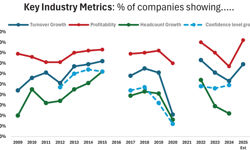At the Mobile Media Strategies conference run by the MediaBriefing in September, I saw both how rapidly mobile is taking over the digital world, and how far it changes the publishing rules. Leaving your head in the sand could be a foolhardy manoeuvre. Here's why change is the only constant for digital publishing, and some tips on how mobile can fit into consumer and business markets.
Mobile will dominate media consumption
Mobile is growing stratospherically across the world, with an expected two billion smartphones and tablets in G20 countries by 2015. In growth economies, such as SE Asia or South America, where fixed line access is poor, mobile access is likely to overtake traditional internet. In the UK, 15% of households own a tablet already, another 7% are very interested in buying one, and a further 15% are quite interested, according to research by Enders Analysis. This would project 7-10m tablets in the UK by the end of 2012. In the UK and US, Apple dominates, but low-cost Android tablets are growing fast in China and other growth economies. The launch of the Kindle Fire and maybe an iPad mini will expand the mass market. Smartphones are also growing rapidly: iOS and Android devices now total almost 900m worldwide. In the UK, half of all phones are now smartphones, of which iPhone has 16% share and Android 20%.
Mobile is changing consumer behaviour - fast
This easy access to the web and useful services is changing people's behaviour surprisingly rapidly: they are getting used to having a powerful device that is always with them. Tablets are beginning to displace laptops, as sales outpace traditional computers, and tablet usage surpasses laptops. People use smartphones on waking up, during their commute, and during downtime; even in bed. At home, a recent US survey showed that people will use a smartphone home banking app even when there is a desktop in the house. Phones are being used in retail outlets to check whether to make a purchase: in the US, 52% of people have abandoned a purchase after checking prices of alternatives on their phone. Tablets are predominantly used at home, with usage peaks between 6-10pm. Tablets are frequently used as a convenient shopping catalogue, with higher order values and better conversion rates than the web.
Consumers will pay for content on tablets… but ad market is slow
There is plenty of evidence that consumers will pay for content on tablets; a recent Nielsen study showed that 40% of US tablet owners have paid for magazine or newspaper content. And the trailblazers on the recent ABCs in the UK show that 5-10% digital share of total circulation is quite achievable. Google estimates total content payments worldwide of $9bn last year, but there is also plenty of evidence that people who use their tablet to read content consume less print.
However the ad market is frustrating for content providers. While the web takes up 25% of consumers’ time and 19% ad spend, mobile consumes 10% of time and only 1% ad spend, according to US stats published by digital analyst Mary Meaker. Advertisers and agencies are wary of investing in mobile, and publishers are finding it hard to build ad revenues. Even global digital leviathans like Facebook and Google struggle to convert their high mobile usage into advertising revenue. Amongst the mere mortals, some publishers are making progress on a small scale, such as Good Food and the Week by creating bespoke ad options, but it looks like the focus in the short term has to be on content revenues.
Why apps aren't magazines
The first wave of magazine mobile editions have been PDF replicas, and these are still a surprisingly good way to test the appetite of your audience for content. But replicas don't really use the potential of the device. If publishers want to truly take advantage of the mobile channel, then they will need to reinvent how they present their content. Magazines have always been about breadth and range, but the best mobile content does just one thing really well. The mobile consumer is often in a hurry, and wants just a quick snatch of information; a solution to an instant problem. Publishers need to shift into a service mentality and think about what their publication can do for their audience. Part of the appeal of mobile is the access to new readers, but this means that mobile editions have to be designed to be welcoming and easy to use for people unfamiliar with the print brand. Subscriptions are a great revenue stream, but the system has to work easily and reliably, and publishers will need to offer good customer service to avoid poor reviews.
How mobile fits into B2B publishing
Business users now expect their trade and professional publications to be available on whichever device they have to hand. Nick Fallon of Informa explained how important it is to understand how users access content, and also the range of different personas among your audience. Information professionals prefer in-depth data, which is best delivered on web/desktop, while busy executives like succinct mobile alerts. Informa is focusing on task-specific tools for native apps, as they can't squeeze the full web functionality onto mobile. But they are moving their data and analysis websites onto responsive design, so that they can be accessed on mobile devices if users prefer.
Lloyd’s List is still published in print, and has 12,000 subscribers to its core web service, with traffic driven by email alerts. Typically, users access the site once a day, for just five minutes. Lloyd’s Intelligence has 7,000 subscribers; who access the service less frequently but for longer periods. Lloyd’s List was launched for iPhone and iPad in April 2011, and had 3,000 downloads by December, evenly split between phone and tablet, with access peaking before 0900 and after 1800. The app is linked to the main web CMS, so content is updated throughout the day but cached for offline use. Non-subs can access the app alone, and it is used as a trial before converting to full web subscription.
So business publishers need to segment their information services and their users, and then be selective about what will work best on each platform. Integrating CMS so content can be authored once is crucial.
How mobile fits into consumer publishing
Consumer publishers were the first to spot the potential of Apple Newsstand, with Future and Immediate Media launching early, and seeing huge uplifts in sales.
Rebekah Billingsley, mobile publisher at Immediate, believes that PDF replicas are fine as a first step onto mobile, especially for smaller publications. Surprisingly, people are happy to read these on smartphones, as well as tablets. Rather than hold out for perfection, it's better to be learning and analysing the data. Once you discover what is popular, then it's time to upgrade and add extra interaction. Immediate had 35 titles on Newsstand by June 2012, and have seen over 1.3m downloads to date.
Subscriptions are important, making up 63% of monthly sales, and 48% of revenue is outside the UK. Initially, digital editions were bundled for print subscribers, but Immediate are moving away from this, as it causes problems with VAT and digital ABC copies. Bookazines and specials such as seasonal editions or brand extensions are proving popular.
The digital editions have been created by the magazine teams, with an integrated editorial workflow, mag sales team selling the ads and the print subs team applying their knowledge of trial subs, pricing and promotions to digital editions.
Agencies were at first resistant to paying for ads on tablet, but Immediate have found that a combination of providing good analytics, an ad design service and using ads in sample issues to extend reach, has paid off.
Future was a pioneer on Apple Newsstand, with 65 titles, and 1.7m downloads since launch, of which 80% are outside the UK. They started with flat replicas, to see what worked, then added interaction and video later. When Total Film was upgraded, sales doubled. 90% of mobile buyers are new to the brand – and some may not want a regular print publication. Future are also experimenting with one-shots, and using a combination of social media and digital editions to test new launches.
Two new obstacles for publishers on tablet are getting featured on Newsstand and avoiding negative user comments. Mike Goldsmith shared his tips on avoiding both. The core is creating interesting, interactive editions, and cultivating a good relationship with Apple, plus letting them know about your external marketing. Customer service and support needs to function well to avoid negative comments. And to engage with ad agencies, apps must have good analytics.
Assumptions are dangerous; learn by testing
The common theme from many publishers was that the only way to really learn is to prototype and experiment, talk to customers and analyse the data; then evolve. If you don't get stuck in, even in a small way, then there's a real risk you'll be left behind.












